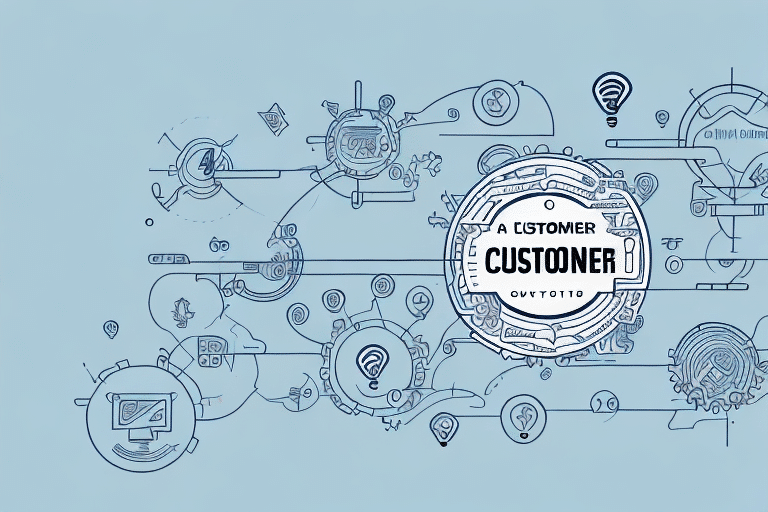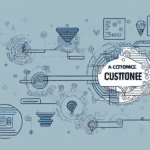Strategies for Improving Customer Retention and Acquisition
Understanding the Importance of Customer Retention and Acquisition
In today's competitive business landscape, balancing customer retention and customer acquisition is essential for sustainable growth. According to Harvard Business Review, increasing customer retention rates by 5% can lead to a profit increase of 25% to 95%. Retaining existing customers is often more cost-effective than acquiring new ones, making it crucial for long-term success.
Benefits of Customer Retention
- Enhanced customer loyalty and lifetime value.
- Positive word-of-mouth and referrals.
- Lower marketing and acquisition costs.
Benefits of Customer Acquisition
- Expansion of the customer base.
- Increased market share.
- Diversification of revenue streams.
Balanced Approach for Sustainable Growth
A harmonious balance between retention and acquisition ensures a steady stream of revenue while fostering a loyal customer base. Businesses should allocate resources effectively to nurture existing relationships and attract new customers simultaneously.
Identifying and Analyzing Your Target Audience
Demographic Analysis
Understanding customer demographics such as age, gender, location, and income level helps in crafting targeted marketing strategies. Tools like Statista provide valuable demographic data to inform your campaigns.
Behavioral Insights
Analyzing customer behavior, including purchasing habits and engagement patterns, enables businesses to tailor their offerings effectively. According to a report by Forrester, personalized experiences can significantly boost customer engagement and conversion rates.
Psychographic Profiling
Delving into the psychographics of your audience—such as values, interests, and lifestyles—allows for deeper connection and more resonant messaging. This approach fosters emotional bonds and enhances brand loyalty.
Enhancing Customer Experience
Personalized Support
Implementing a Customer Relationship Management (CRM) system can streamline interactions and provide personalized support. According to Salesforce, 84% of customers value being treated like a person rather than a number.
Streamlining the Purchasing Process
A seamless purchasing experience minimizes friction and reduces cart abandonment rates. Simplify navigation, offer multiple payment options, and ensure a mobile-friendly interface to enhance user experience.
Improving Communication Channels
Providing multiple channels for customer support—such as email, phone, live chat, and social media—ensures accessibility and responsiveness. Quick and effective communication builds trust and satisfaction.
Building a Strong Brand Identity
Consistent Branding Across Channels
Maintaining a consistent brand image across all platforms, including social media, email marketing, and physical storefronts, reinforces brand recognition and trust. Consistency in messaging and visuals creates a cohesive brand experience.
Developing a Unique Brand Voice
A distinctive brand voice sets your business apart from competitors. Whether it's professional, friendly, or quirky, a unique tone can resonate with your target audience and foster deeper connections.
Leveraging Storytelling
Effective storytelling humanizes your brand and makes it more relatable. Sharing your brand’s mission, values, and customer success stories can enhance emotional engagement and loyalty.
Leveraging Digital Marketing Strategies
Social Media Engagement
Active engagement on social media platforms allows businesses to interact directly with customers, gather feedback, and promote products. A LYFE Marketing report highlights that 73% of marketers believe social media marketing has been somewhat or very effective for their business.
Email Marketing
Email marketing remains a powerful tool for nurturing relationships and driving repeat business. Personalized email campaigns can deliver exclusive offers, product updates, and valuable content to keep customers engaged.
Referral Programs
Implementing referral programs incentivizes existing customers to refer new ones. Studies from Invesp show that referred customers have a 16% higher lifetime value than non-referred customers.
Measuring and Optimizing Strategies
Key Performance Indicators (KPIs)
Tracking KPIs such as customer churn rate, customer lifetime value, and customer acquisition cost provides insights into the effectiveness of your strategies. Tools like Google Analytics can help monitor these metrics.
Customer Feedback
Collecting and analyzing customer feedback through surveys, reviews, and feedback forms helps identify areas for improvement. Responding promptly to feedback demonstrates commitment to customer satisfaction and continuous improvement.
Continuous Optimization
Regularly reviewing and adjusting your strategies based on data and feedback ensures that your retention and acquisition efforts remain effective and aligned with evolving customer needs.
Investing in Employee Training and Development
Enhancing Customer Service Skills
Well-trained employees are crucial for delivering exceptional customer service. Training programs that focus on communication, problem-solving, and empathy can significantly improve customer interactions and satisfaction.
Building a Customer-Centric Culture
Fostering a culture that prioritizes customer needs encourages employees to consistently deliver high-quality service. Recognizing and rewarding customer-focused behaviors can reinforce this culture.
Conclusion
Improving customer retention and acquisition involves a multifaceted approach encompassing audience analysis, enhanced customer experience, strong branding, effective digital marketing, and continuous optimization. By implementing these strategies, businesses can foster loyalty, attract new customers, and achieve long-term success.






















